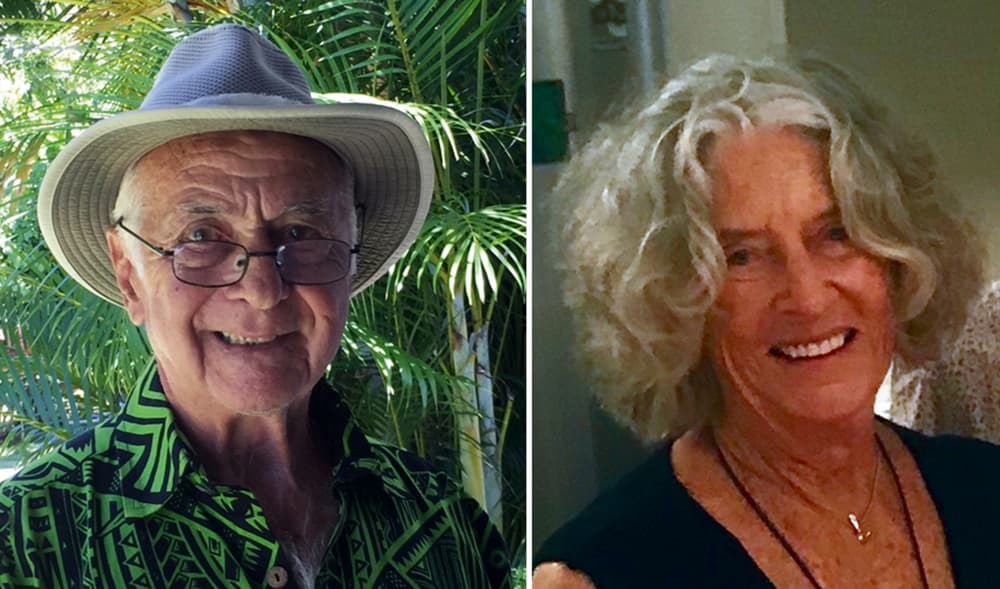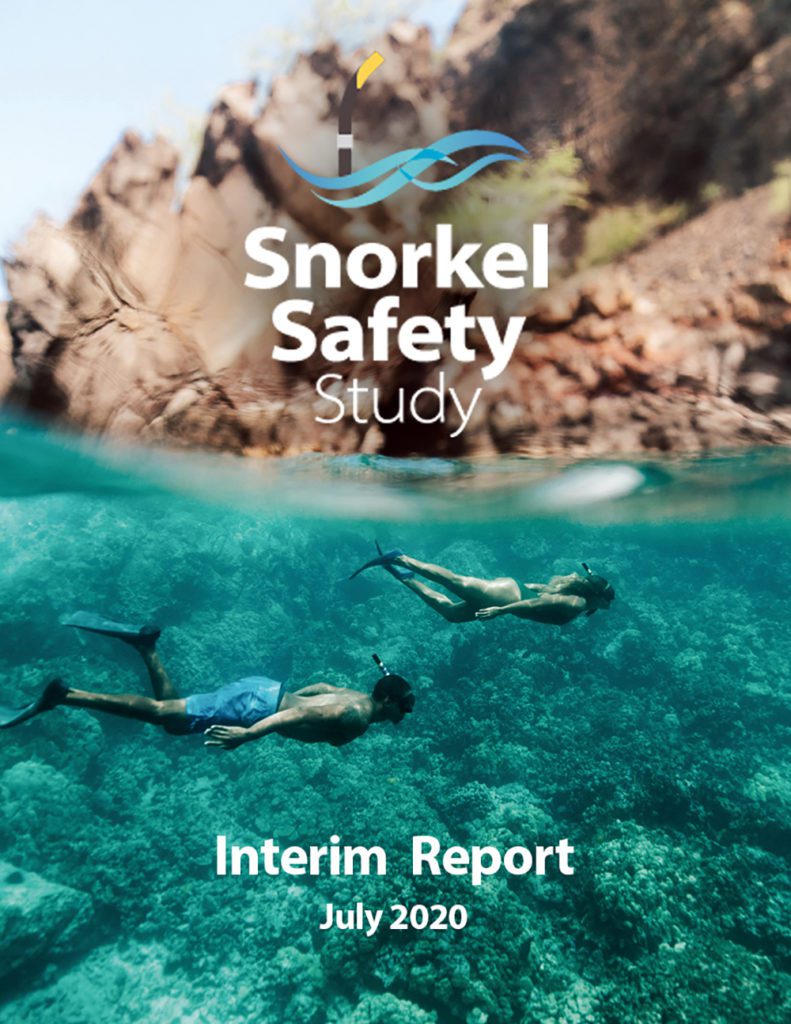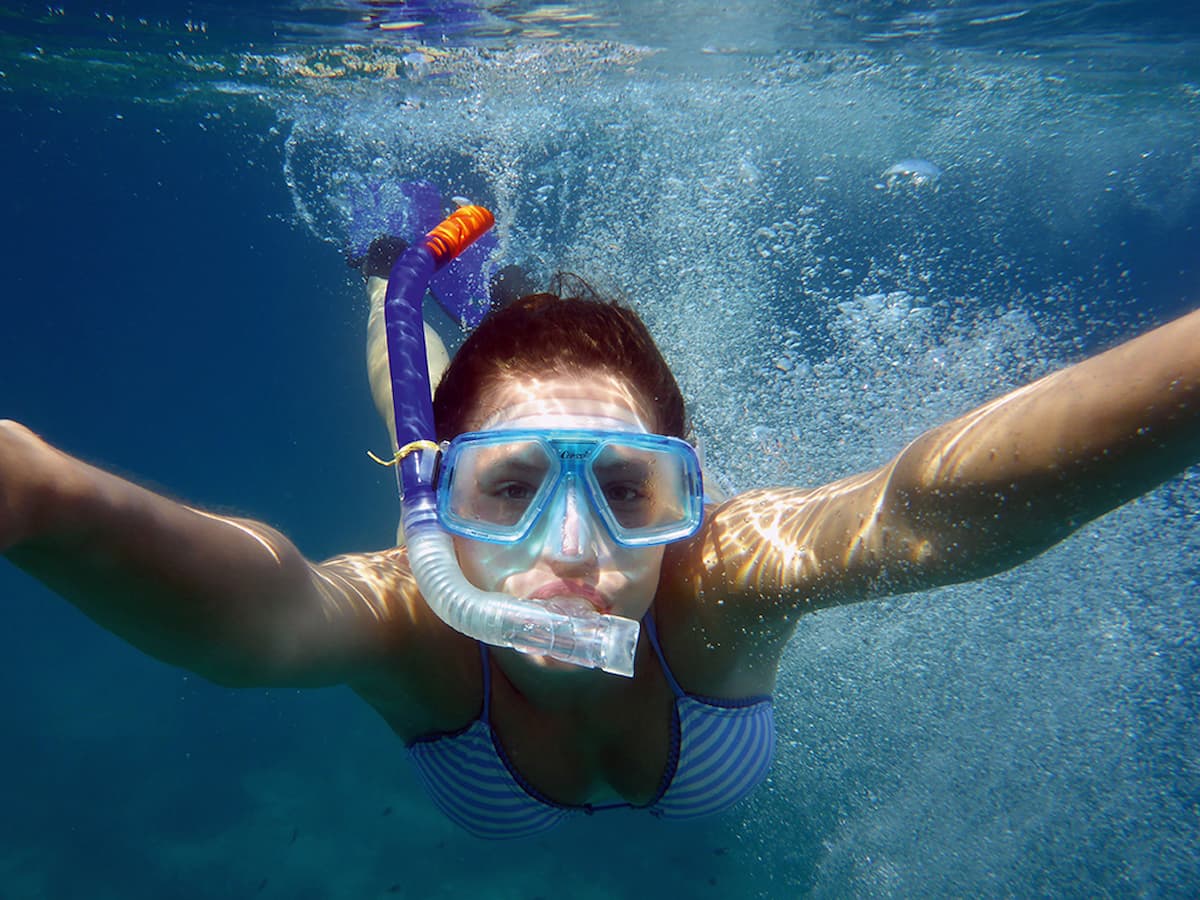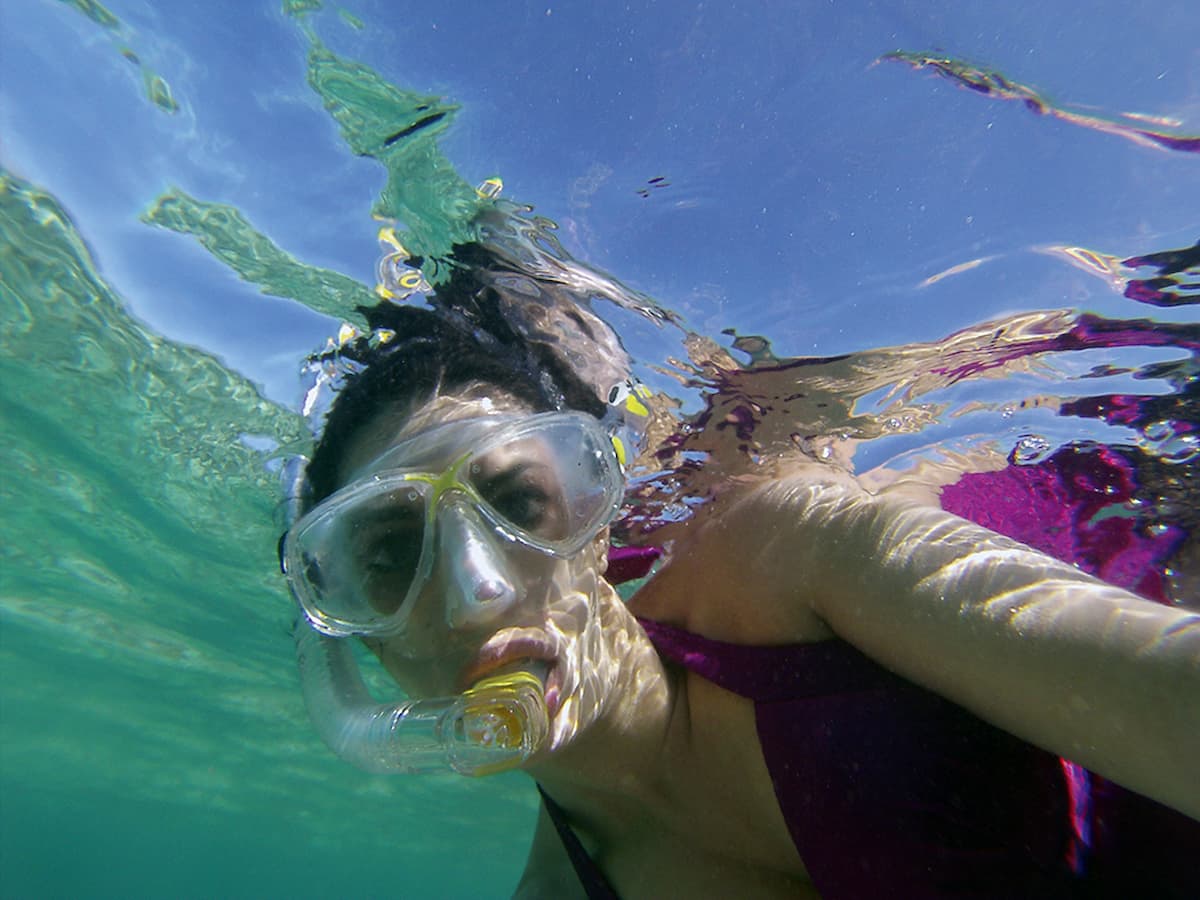Detective work following a spate of peculiar fatalities in the Pacific off Hawaii suggests that a new risk-awareness – and getting the design of the humble snorkel tube spot-on – could be a matter of life or death. STEVE WEINMAN reports
“The water was at high tide and choppy. About 50m offshore, I was struggling to catch my breath. I didn’t think I could make it back, so held onto a post on the reef. I was unable to call out or wave.
“I started to swim back in. My arms were leaden; I couldn’t freestyle. My arms were completely dead.
“At 10 metres from shore my heart was pounding in my ears so loudly it was deafening. I felt I was about to die.
“A wave pushed me to shore. A woman on the beach noticed my distress and called for help. The beach attendant applied oxygen, which revived me.
“When it was removed, I became unconscious. I was taken to the hospital.”
We’ll hear more from this experienced female snorkeller and strong swimmer later. She was one of the lucky ones.
After a time, the sheer numbers of people drowning while snorkelling off the beaches of Hawaii could no longer be dismissed as “just one of those things”.
The circumstances of so many of these deaths – an apparently quiet surrender to the sea, often in calm, unthreatening, warm waters close to shore, soon after entry and with no hint of marine-life involvement – were distinctly odd.
In many cases the victims’ demise would not have been noted immediately by onlookers. With no signs of distress, they would be found face-down at the surface, as if still snorkelling but hovering motionless to take in the view below.
Medical examination would show that they had drowned – but how could that have happened?
Many of the victims were middle-aged or elderly, defined as “over-50s”. Often they were male, but not necessarily unfit.
Pre-existing age-related medical conditions might have explained some of the cases, but by no means all of them.
Another thing: the vast majority of the victims were visitors to Hawaii.
Islanders were inclined to put the high death-toll down to factors such as anxiety, panic, fatigue, inexperience or lack of familiarity with ocean conditions, equipment or technique. Yet in at least a quarter of the fatalities, the snorkellers had no shortage of experience.
The deaths also coincided with a trend towards use of full-face snorkelling masks, the sort that came in useful when repurposed during the Covid pandemic to help aspirate hospitalised patients.
As a result, in Hawaii these designs were soon being treated with suspicion.
Yet many of the victims had been using traditional snorkelling tubes or, perhaps, the novelty variants that have appeared over time as manufacturers jostle to gain a marketing edge.
Five years ago, a local press report crystallised what was going on. Deaths among snorkelling tourists in Hawaii were 13 times the national average and 10 times those of residents, it stated.
But could the hardly-rocket-science skill of swimming while breathing through a tube really be so far beyond tourists?
Over the years Hawaiians must have grown wearily accustomed to reading news reports of individual snorkelling deaths, but looked at collectively the figures were stark. Between 2009 and 2018 there had been 206 snorkelling deaths – 189 of them tourists.
Compare that with the fatalities in that period of scuba-divers (28), freedivers (46) or swimmers (80).
In October 2017, at the behest of the state health department, a sub-committee was formed to address the growing public concern. This represented Hawaii’s health, tourism and emergency services authorities and the state medical examiner’s office, and it took a deep dive into the problem.
Left to right: Principal investigator Dr Philip R Foti MD; project manager Carol Wilcox, herself a snorkel-drowning survivor.

Pulmonologist Dr Philip Foti has been practising in Hawaii for more than 50 years. Appointed principal investigator, he and the rest of the team prepared a preliminary report called the Snorkel Safety Study. It was published, though the full report is still awaiting peer review.
The study makes compelling reading, because it points the finger of suspicion firmly at a condition not previously associated with snorkellers, and one that is contentious among scuba-divers – immersion pulmonary oedema or IPO, also known as “drowning from the inside”.
In the report IPO is referred to as ROPE – rapid onset pulmonary edema – or SIROPE (snorkelling-induced ROPE), but what we’re talking about is essentially the same – infusion not of seawater but of bodily fluid into the lungs, reducing their capacity to deliver oxygen to the blood.
It’s an insidious process. The report describes it as quick and quiet respiratory impairment that can be triggered by snorkelling.
In the UK IPOs have been linked with a number of unexplained scuba-diving deaths, and have become a bone of contention in insurance claims where the exact cause of a diver’s death is disputed.
IPOs among scuba-divers have also been linked with over-hydration – again controversial for a sport in which good hydration is advocated as a primary precaution against decompression illness.
Although initially the compilers of the Hawaiian report could find only a single documented example of a suggested snorkelling IPO death (from 2017), they are now in no doubt that pulmonary oedema is the main explanation for the unacceptable numbers of snorkellers ending their days in the islands.
“This phenomenon, while identified in other activities such as scuba and swimming, has not before been associated with snorkelling, yet the evidence is indisputable,” the study concludes. “It is borne out by physiology, case studies, medical records and first-hand accounts.”
It is possible for IPO victims to be rescued, if the typical sequence of symptoms is recognised early enough.
These progress through sudden shortness of breath through weakness, loss of strength, confusion/sense of doom and unconsciousness to death.
Dr Foti and his colleagues heard first-hand about the experiences of a number of survivors who had been rescued or, realising their predicament, had managed to self-rescue. By March this year there had been 90 responses and they’re still coming in and being considered.
Relevant was the fact that 75 of these snorkellers had been out of their depth when they got into difficulties, and 70% found themselves struggling within 20 minutes of starting their swim – making fatigue or cold less likely to be factors.
The report describes hypoxia induced by an IPO as “the cause of some, probably most, snorkel-related fatal and near-fatal drownings”. But why should snorkellers be susceptible to this condition?
The team reckon two major factors are at work in tandem here: the act of lying horizontal in the water, so that the effect of water pressure exerted on the chest needs to be overcome in order to breathe; and resistance to inhalation created by breathing through a resistant narrow tube, which they say can result in “negative transthoracic pressure”.
Lying prone redistributes intravascular blood, with 500-700ml accumulating in front of the heart and lungs and increasing ambient pressure, say the experts. And even using the least-resistant snorkels results in an additional 3-5cm of negative water pressure per breath.
Snorkels should in theory offer relatively minor additional resistance,
but substantial increases in required negative pressures can occur without snorkellers realising it, especially if they start finning that bit harder.
Appeared in DIVER August 2021
For the study 49 snorkels – 16 simple tubes, 29 tubes with additional wet/dry apparatus and four full-face masks – were tested for resistance using an invention of Dr Foti’s, a Snorkel Airway Resistance Analyser (SARA).
Generally, the simpler the snorkel design the less resistance it generated, and the more exertion on the snorkeller’s part, the greater was the resistance.
The conclusion seems to be that snorkellers need to be selective when choosing a breathing device, just as scuba-divers need to take care when picking a regulator. However, as the researchers soon found, trying to determine the resistance of a product through a cursory visual inspection proved unreliable.
It could be the size of the tube at the narrowest point, at the bend near the mouthpiece or the design of a valve that caused the problem.
The report that first drew attention to potential pitfalls for snorkelers.

The study stressed that, based solely on these experiments, full-face snorkelling masks had no inherent advantage or disadvantage in terms of resistance.
That wasn’t to say they were off the hook. The researchers drew attention to other drawbacks inherent in full-face designs, and there would seem to be enough of these to make potential purchasers at least pause for thought.
They couldn’t be removed easily in an emergency, including those with “quick-release” features; the mouthpiece couldn’t be spat out; water couldn’t be cleared from the tube by blowing sharply; the user couldn’t dive beneath the surface safely; and valve malfunction could lead to serious consequences for breathing.
Evidence of the supposed CO2 accumulation that had previously been advanced as a possible explanation for at least some snorkel-related drownings could not be found in the tests.
But it’s worth noting that of those survivors who contributed to the survey, no fewer than 38% had been using full-face masks – and 90% of them believed it had been a factor in their experience.
In the initial report, wet/dry snorkels were not singled out for any particular criticism. These have a float valve to seal the tube if it becomes submerged, so they’re designed for people who might have trouble blowing water out of the tube, for whatever reason. But the valve could be a risk factor if it caused any constriction in the tube.
The team reviewed coroners’ reports on the snorkelling victims, and found that it was not possible to differentiate between drowning by aspiration of water and by IPO. In both cases the lungs ended up full of liquid, causing death by hypoxia.
But of 32 deaths closely analysed with all other factors taken into account, no fewer than 15 were judged to be “very likely” the result of hypoxia due to an IPO, and 14 considered as likely to be due to either cause.
The post mortem reports also indicated a promising avenue to explore further. They pointed to a “significant correlation” of the drownings with cardiac disease, in particular Left Ventricle End Diastolic Pressure (LVEDP), which is more common in older people. There are often no symptoms with this condition.
Among the survivors, of 31 respondents who had a pre-existing condition, 84% had high blood-pressure or heart issues.
So the plot thickens and leaves the question of why the preponderance of tourists among the victims – and why Hawaii? After all, it isn’t the only part of the world where snorkellers take to the sea in numbers.
When I put this question to Dr Foti he came straight back with a slew of explanations. “We have too many tourists in the high-risk groups, and more tourists seem to snorkel in Hawaii than elsewhere,” he told me.
Worryingly, he also pointed towards “poor record-keeping and data-storage in many of the other popular areas in the world – we’ve checked”. Could it be that snorkelling deaths by IPO are more common around the globe than anyone had previously suspected?
Dr Foti added that by law Hawaii requires full post mortem examinations on all drownings, so that “data-collection is reasonably easy through the medical examiner’s office”.
Finally, he pointed to the fourth possible explanation for the proportion of deaths among tourists in his team’s study – and this is another interesting one, for scuba-divers as well as snorkellers.
“Air travel is a hypothesis, but in my opinion likely to be a significant sub-clinically apparent risk factor,” he told me.
By this he means that most tourists arriving in Hawaii, flying far out into the Pacific from North America or Asia, would recently have spent at least five hours at altitude.
The study concludes that this can be considered as a “feasible factor”, because
it could alter the permeability of the lung mechanisms that would normally block development of an IPO.
“It’s our theory that the reason for the high level of visitor deaths in Hawaii is explained by recent prolonged air travel, which can establish a certain baseline of oedema,” I was told by the study’s project manager Carol Wilcox. She herself is a snorkel-drowning survivor – the one whose account introduced this article.
“Many tourists go snorkelling the same day, or within a day or two of arriving,” she said. “Many of them, especially those from Asia, have been in the air upwards of nine hours. Many planes are pressurised at 8000ft-plus, although the newer planes are more like 6000.
“All that being said, we were unable to find the resources to test this theory.”
With all this in mind, what should snorkellers do to protect themselves? Advice issued in the report includes taking a leaf out of the scuba playbook and never going it alone – fin with a buddy. You should choose snorkels carefully when buying or hiring, being especially careful to avoid any constrictions in the mouthpiece or bore.
Avoid snorkelling if there is any doubt about your cardiovascular health, and hold off for a few days after landing from a flight as a precaution.
And once you’re in the sea, at the first sign of any unusual shortness of breath get yourself upright and leave the water as quickly as possible.
Asked to comment on the Snorkel Safety Study’s interim report, Dr Doug Watts, medical director of DDRC Healthcare, pointed out that more data would be required to explain how the report’s conclusions were reached when the study was peer-reviewed.
However, “the scale of the problem is significant,” he acknowledged. “Shocking numbers of visitors to Hawaii have died snorkelling.”
He pointed out that the investigation has so far concentrated on snorkel resistance and product differences as highlighted by the SARA data.
“Most scuba-divers regard snorkelling as a benign activity and probably wouldn’t consider that choice of snorkel has safety implications, which it may,” he said. “The advice given about snorkel selection sounds good.”
He also pointed out that pre-existing cardiovascular disease as a risk factor for IPO was something that snorkellers shared with scuba-divers – highlighting the value of a diving medical – and felt that the concept of changes in the lung occurring with altitude of cabin pressure might also be a factor relevant to scuba-divers, and should be further investigated.
Diving doctor Ian Sibley-Calder, DIVER’s medical consultant, agreed with this.
“The mechanism of negative pressure rings true, and the theory of prolonged air travel giving rise to changes in permeability deserves further research, if it hasn’t already been done,” he said.
“The resistance in snorkels also needs looking at – maybe it’s time for a more regulated production, in line with pressure measurements when looking at scuba second stages.
“The parallels with IPO in scuba are striking,” said Dr Sibley-Calder. “It would have been interesting to look at incidences of hypertension in the deaths as well.”
“There is obviously a massive problem, but to me the cause is still unclear,” summed up Dr Watts. “As with all of these things, it’s likely to be multifactorial.”
It could be informative to carry out similar incidence studies in other parts of the world but, as he pointed out, the problem with such studies lies in obtaining reliable data on overall numbers of participants. “We might know the number of deaths but we can’t work out the risk if we don’t know the denominator – the number of divers.”
Sudden onset immersive pulmonary oedema in snorkellers may be as common, or more so, than accidental aspiration, concludes the preliminary Snorkel Safety Study.
In which case we divers, who often also snorkel during surface intervals or on surface swims, including what can be high-speed encounters with manta rays or whale sharks, need to be aware that there are risks.
We should also recognise this on behalf of family-members or friends who go for the “softer option” on holiday.

Snorkelling is usually regarded as the “safer” alternative to scuba, so it would be a cruel twist if the act of breathing through a poorly designed tube proved riskier than previously suspected.
The bottom line is good news, however. If IPOs in snorkellers are accepted as a risk, it is at least one that, through product design and awareness, we can fix.
The Snorkel Safety Study findings are available for free download, and to extend their research the team would appreciate hearing from other snorkellers who have experienced any problems.
Take the survey at Snorkel Safety Study









Such an interesting article. Can only hope more folks read this article. We have been very interested since hearing of the questions involving full face gear. We travel to Maui frequently and do snorkel. Thank heavens we have never experienced this. As we grow older will keep this in mind!
The simple answer to this problem is residual air in the snorkel. When you exhale, you blow air out of the tube, but you also leave a snorkel full of used air. When you inhale, you bring in all of the bad air from the snorkel before getting any oxygen. Each breath creates more of an oxygen deficit, resulting in hypoxia.
The full face masks are much worse as they contain far more residual air.
Most people do not breathe deeply enough which causes them to have a higher percentage of bad air in each breath.
Solution: No shallow breathing! A deeper breath will give you a much higher percentage of oxygen and will prevent hypoxia. Also, don’t overdo it and try to take the deepest breaths possible.
A friend of a friend died last weekend snorkeling in Hawaii. So I looked up these articles to learn more. Such an unexpected death from was thought a safe activity.
Excellent article but I can add something important. As an avid snorkeler living in Hawaii I noticed something. Urination as I snorkel. I pee constantly and can’t control it when I snorkel. I noticed it depletes my electrolytes and often if I stay out snorkeling too long when I get out my heart will try to go out of rhythm. I have to immediately get electrolytes in me especially potassium. I carry coconut water and nuun tablets on me for after a long snorkel. Years ago when I noticed this I researched and found out that the kidneys are trigged to work harder when out in the water. They filter more. You are losing electrolytes during that process. It also causes a slight elevation in blood pressure when you start swimming.
They should interview avid snorkelers living in the islands to help put together more pieces of this complex puzzle. Overall very well written.
Tip of the hat to the work of Dr. Foti and Carol Wilcox, both of whom I interviewed and spent time with in November 2019 after the death of my dear Japanese friend who died while snorkeling on her very first dive into the sea. She was on a dolphin cruise and did not have a swim buddy, even though she was in a group of tourists. She went snorkeling within 24 hours of her 8-hour+ flight from Japan and her autopsy revealed evidence of an enlarged heart, giving credence to the need for a “diving physical” before any snorkeling activity. Anyone with a pre-existing heart condition would be advised to not dive or to at least get a full physical and wait to go snorkeling after a long-haul flight.